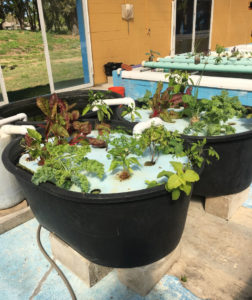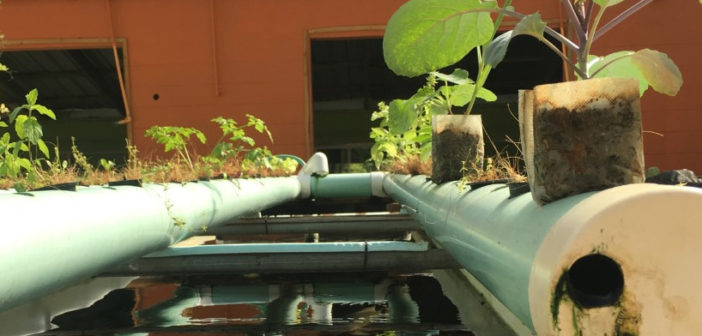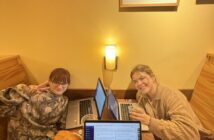By: Zachary W. Pottle, Contributing Writer
“Give a man a fish, he eats for a day. Teach him how to raise aquaponic fish & vegetables and the whole community eats for a lifetime,” said Hans Geissler, founder of Morningstar Fishermen Aquaponics located just down the road in Dade City, Florida.
For over 20 years Hans and his team have educated hundreds of local communities on the importance of sustainability, as well as helping them set up their own aquaponics facilities.
Yet, to this day, even after two decades of hard work and countless lessons given to the public, many are unaware of what aquaponics even is.
Aquaponics is the process of combining aquaculture and hydroponics to create a symbiotic relationship between the two.
To put it simply, they grow plants on top of fisheries. How does this work? By growing the two together, each benefits from the other. The fish waste provides a natural, organic food source for the plants, and in return, the plants filter the water that the fish lives in. By combining these two methods, the amount of labor required to grow plants is dramatically reduced, and this, in turn, lets both plant and fish take advantage of each other’s natural benefits.
Why is this important? Because, as Hans and his team have told so many before, this relationship between both plant and fish not only reduces the amount of water needed to grow plants, it also minimizes the environmental impact, and increases total productivity. A normal land-based agriculture system has numerous drawbacks. For one, they require a staggering amount of water. The volunteers over at Morningstar Fishermen explained that land-based agriculture uses 80-90% of all water consumption in the United States.
Aquaponics, when scaled, uses only 1-3% of the normal water supply of traditional agriculture.
Another major problem facing today’s agricultural systems is the use of harsh, environmentally harmful chemicals, which are used to keep plants healthy and prosperous. With the use of aquaponics, the need for these chemicals is completely unnecessary, as the fish waste provides a natural, safe food for the plants, which Hans has explained actually mimic many of the benefits found in the chemicals being utilized. Yet, to many, this process seems daunting.
It seems out of reach for the everyday gardener who just wants to grow a few vegetables in their backyard. “This is not the case,” Hans explained, “We are all about education here, and what we do is teach people how to do this in their own communities and backyards”. One need look no further than across the street from Saint Leo University, to the sisters that have lived alongside the school for years.
They have started their own aquaponics facility, with the help of Hans and his team. Their facility resembled that of so many others over at Morningstar. Here, the sister has started to cultivate their own food, on top of a small tilapia tank.
When asked why the sisters have taken an interest in such a unique form of agriculture, many shared the same thoughts, “To help reduce our impact on the environment.”
The sisters of Saint Leo have taken it upon themselves to think of the bigger picture, which is helping scale back our consumption of natural resources and to grow safer, chemical-free food. Aquaponics does not need to be a massive, money-making operation. In fact, it is quite the opposite. As Hans has stressed so many times, it is for everyone. From big corporations to the sisters, and even to the backyard enthusiast growing tomatoes. “If everyone in Dade City utilized aquaponics, the city could support produce consumption entirely” Hans stated.
So what does this mean? Should America stop land-based agriculture? That is unlikely say the people at Morningstar. This type of operation scaled to that size would be almost impossible, as a facility of that size would be extremely expensive compared to the cheap irrigation systems used today. Those facilities only need to dig holes in the ground, and run lines of water along them, much more cost-efficient than building a massive facility; even though that facility would, in time, become self-sustaining and ultimately much less expensive to keep up. No, the push for aquaponics needs to be in small communities and backyards.
This is where great change can occur. Towns can become self-sustaining, communities that don’t have access to major produce suppliers can become mini farmers markets of their own. The average person who grows fruits and vegetables can dramatically reduce their impact on the environment, by easily setting up their own facility. For many, this task may seem like more work, but Hans and his team beg to differ, and they encourage people to let them prove their point. Morningstar Fishermen offer classes teaching people about the benefits of aquaponics, and how to set up their own small scale systems at home. This is the direction that agriculture needs to go, but change has to start from the bottom if it is ever to rise to the top.





